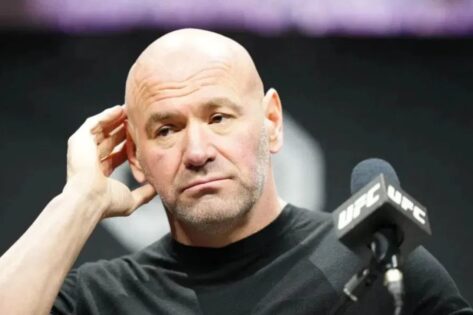After two decades of extraordinary growth, the once-rising tsunami of MMA in the United States appears to be settling into a slow and steady decline. Not a crash or a collapse, but a notable shrinkage that signals the end of MMA’s expansion in the American market. The fights haven’t stopped, but the volume has. And, while the Dana White-led promotion remains dominant abroad, the UFC’s home base offers a different narrative.
Just like the hips, the facts don’t lie either. The U.S. market, which has long powered the sport, seems to be cooling off. But why? Well, let’s find out how Dana White and the UFC are causing the downfall of the American MMA scene!
The United States has reached peak MMA
For years, MMA was viewed as a limitless frontier, with new markets, more stars, more fights, and more fans. But, like with any boom, there is a tipping point. And now in the United States, the numbers seem to be quite concerning. We would be wrong to say that MMA is dying, just like the hopes of Conor McGregor making a return to the Octagon; instead, its most reliable growth lever may have been pulled way too many times.
The stats are clear: we may have hit “peak MMA” in America. The word is derived from the notion of “peak oil,” which occurs when a resource reaches its maximum output before entering a long, irreversible decline. The oil does not vanish, but growth slows, extraction becomes more difficult, and profits flatline worse than Charles Oliveira after receiving that right hook from Ilia Topuria.
MMA isn’t dying, but it sure is in decline and some trouble. https://t.co/f72CkQzgkL pic.twitter.com/eElQmRdKXv
— Luke Thomas (@lthomasnews) July 1, 2025
MMA, too, is facing a similar challenge—one of quantity rather than quality. And the Tapology database, which tracks every sanctioned bout globally, verifies it: while global numbers are slightly down, it’s the U.S. that’s nosediving the hardest.
What do the numbers look like?
Back in 2009, the United States held 6,266 professional MMA bouts, the most of any nation at the time. By 2024, that figure had decreased to just 3,027. That’s a startling 52% drop in 15 years. Based on current trends, 2025 may see even fewer fights, with only 1,204 registered through May, projecting to approximately 2,900 by the end of the year.
This isn’t a one-time occurrence following COVID. After the 2020 pandemic reduced global events to 9,166 bouts, there was a recovery, but it never really stuck. In 2023, the world will host 18,096 professional bouts. That figure fell to 16,808 in 2024. The United States, which was previously responsible for roughly a third of global fights, now hosts less than a fifth.
To make matters worse, regional shows, which were once the lifeblood of American MMA, are vanishing faster than Jon Jones‘ credibility as the GOAT. Fewer events mean fewer fighters developing, fewer local stars emerging, and fewer paths to the top. But why? Well, as operating costs grow and local fan engagement declines, the grassroots simply die. And who’s to blame for all this fiasco? Well, none other than the Dana White-led UFC.
Dana White’s UFC is reshaping and shrinking the MMA scene
While the UFC is more powerful and profitable than ever, its dominance may come at the expense of the sport itself. With record-breaking earnings, global media deals, and near-complete control over elite talent, the UFC continues to expand. However, the critics claim that it also suffocates the rest of the industry.
An ongoing antitrust lawsuit accuses the organization of suppressing competition not by outperforming competitors, but by preventing fighters from signing elsewhere. Former UFC CEO Lorenzo Fertitta explained in 2014 that the goal was to “keep taking these f—–‘ oxygen till they tap out.” A decade later, the master plan seems to have worked.
The PFL absorbed Bellator, while the promotion itself seems to be struggling worse than Conor McGregor’s legal portfolio. Invicta FC has sunk into obscurity. ONE Championship is moving away from MMA entirely. The end result is a global sport with a single dominant brand, while the rest of the landscape is as barren as Sean Strickland‘s head.
Image credits: Imago
So, is MMA dead? Well, not exactly. This is not a collapse like Tony Ferguson‘s MMA record, but rather a shift. Although MMA as a whole is not disappearing, the version that thrived on grassroots energy and regional variety is gradually fading. In its place comes a more centralized structure, with practically all routes leading to the UFC.
The post U.S. MMA Market Drops 52% as UFC Rise Sparks Collapse of Promising Promotions appeared first on EssentiallySports.
